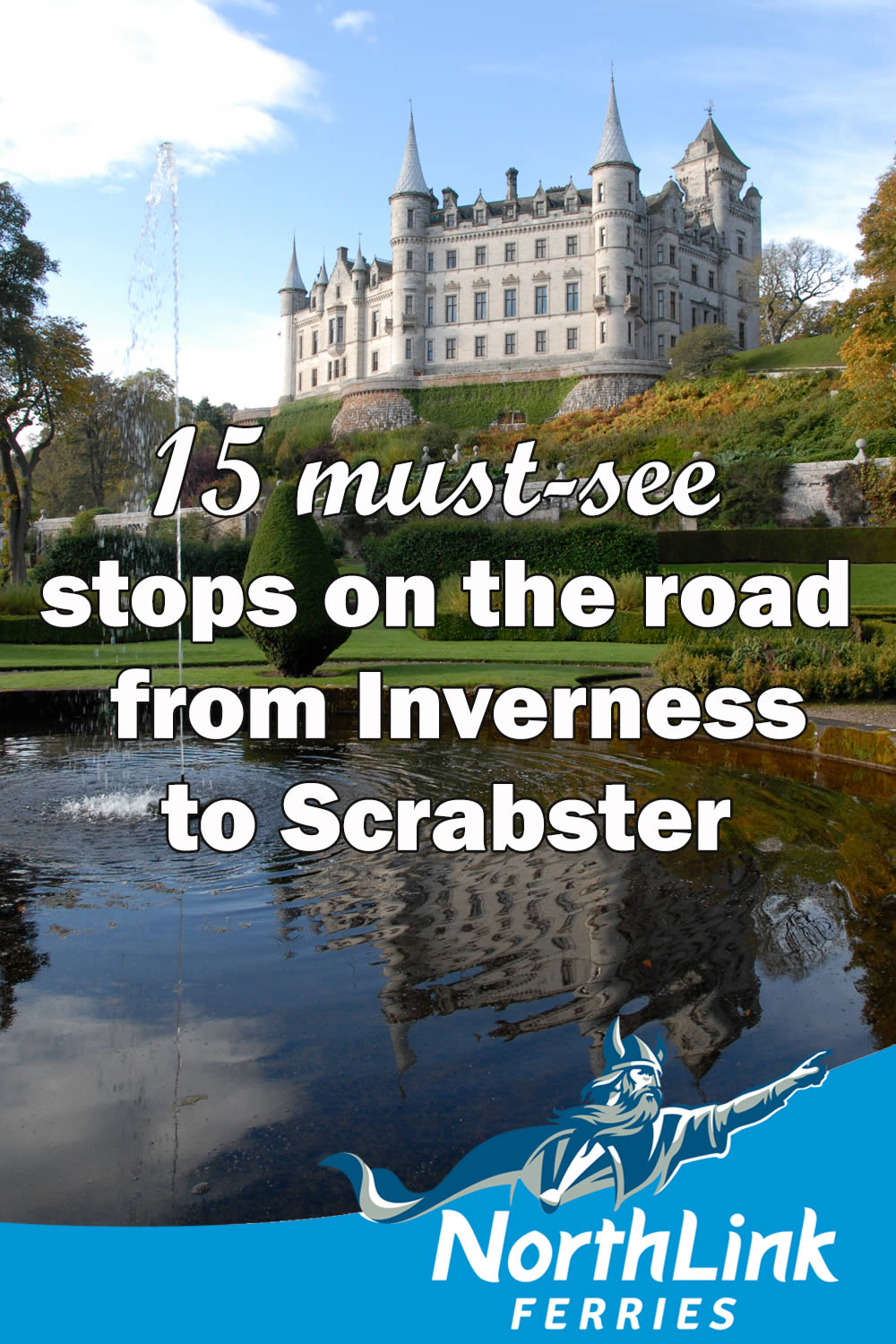15 must-see stops on the road from Inverness to Scrabster
The North Highlands are truly beautiful, and the journey from Inverness to catch the Hamnavoe in Scrabster should be one to savour.
Just outside Golspie stands enchanting Dunrobin Castle. This huge mansion house was designed in the 19th century by Sir Charles Barry, who was the architect of the Houses of Parliament. Film buffs may recognise Dunrobin Castle from Stanley Kubrick’s film Barry Lyndon.
Over the years, the road, the A9, has been improved to cope with the demands of 21st century traffic. It has been made faster, bridges have been added, roads have been widened, and some beautiful places are now bypassed completely.
This guide is for those travelling on the A9 from Inverness to Scrabster and back. We hope it will be of use to those with an hour to kill who might be looking for an interesting place to stop. Make sure you return to enjoy all the surrounding areas of this beautiful part of the world!
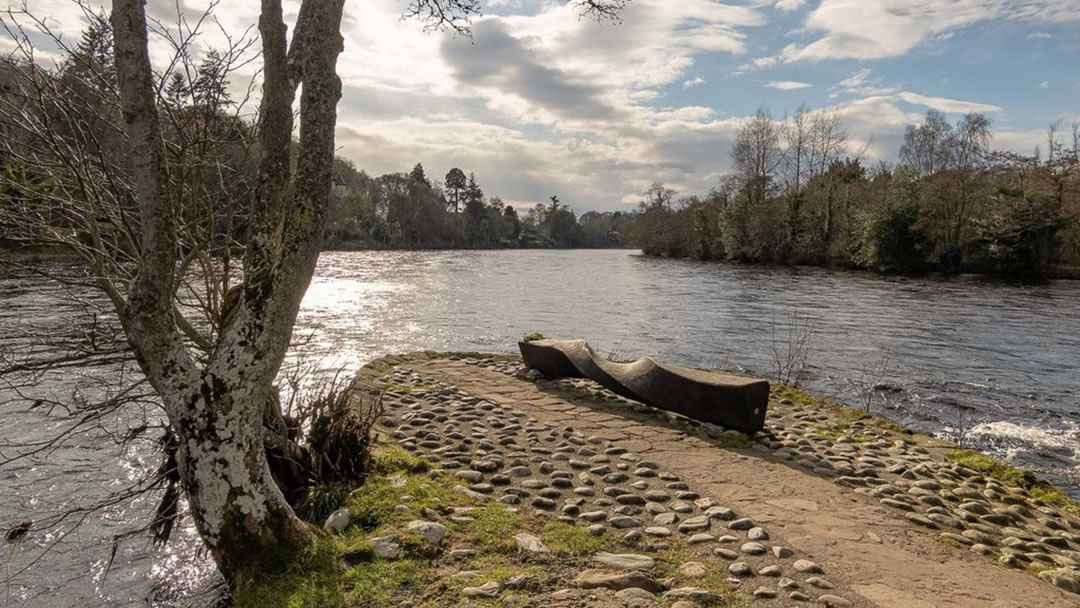
1. Inverness
There’s plenty to see around Inverness, including a trip to the emotive Culloden Battlefield and Visitor Centre, the mysterious Loch Ness, the grand Inverness Castle which overlooks the town centre, and the peaceful Caledonian Canal.
Did you know? A river snakes through the centre of Inverness, and a walk across the footbridges to the Ness Islands is a treat. Can you find the Nessie sculpture amongst the trees?
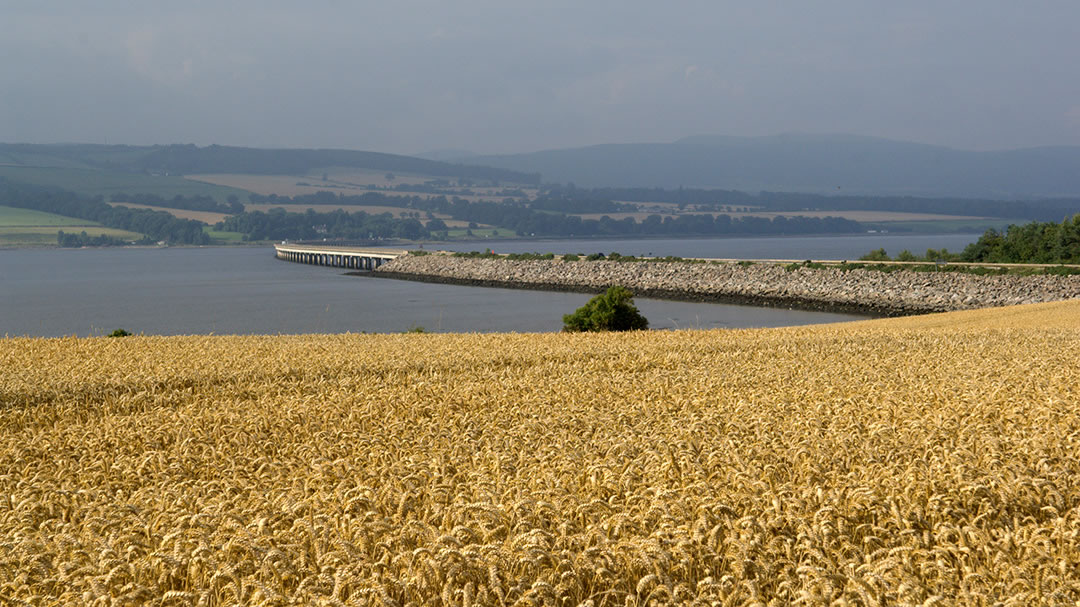
2. The Black Isle
The first highlight north of Inverness is The Black Isle, which is a peninsula surrounded on three sides by the sea. It was previously an isolated area, but now the A9 now passes through it, met by the Kessock bridge (opened in 1982) and the Cromarty bridge (opened in 1979). The Black Isle is known for golden fields, dappled woodland, and fossil finds!
Worth stopping for, Munlochy Clootie Well is visited by those looking for good health and luck! Those who drank the water were required to leave a gift of cloth for a fairy. These days the tree branches surrounding the well are draped in colourful cloth.
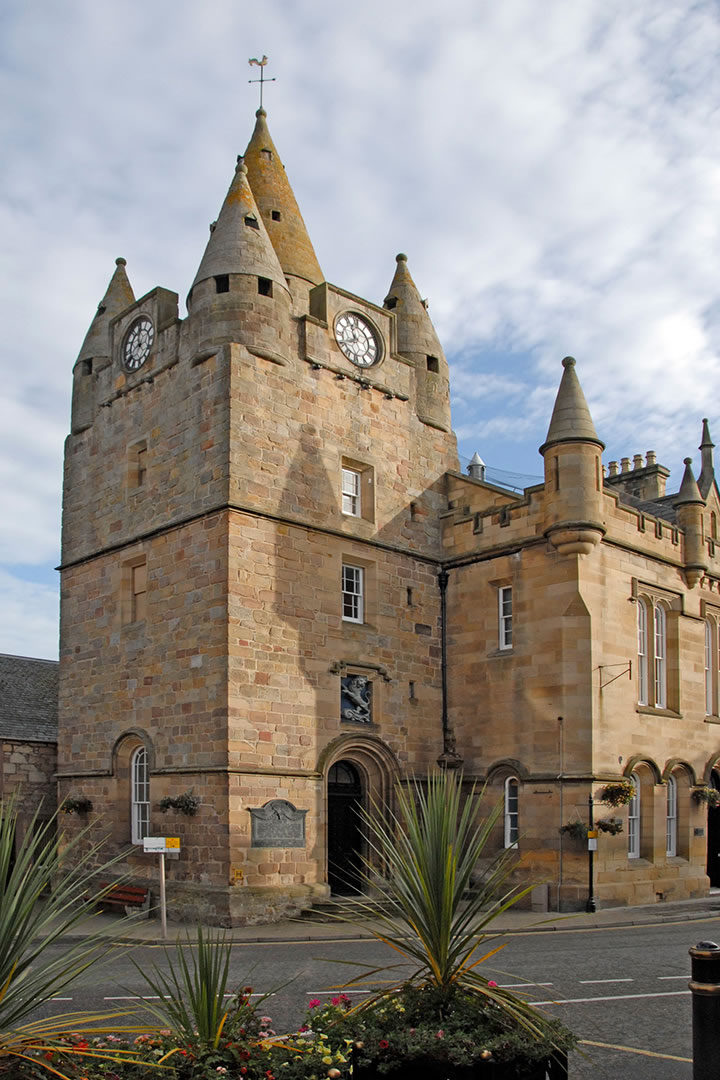
3. Tain
After the low and long Cromarty bridge, the road to Tain passes Alness and Invergordon. The deep blue waters of the Cromarty Firth are now used for oil rig maintenance, but in the past the area around Tarbat was used to practise beach landings for D-Day.
Tain has an attractive old fashioned town centre with independent shops, a history of gold and silver-crafting and an impressive tower – The Tolbooth. Glenmorangie whisky is distilled here.
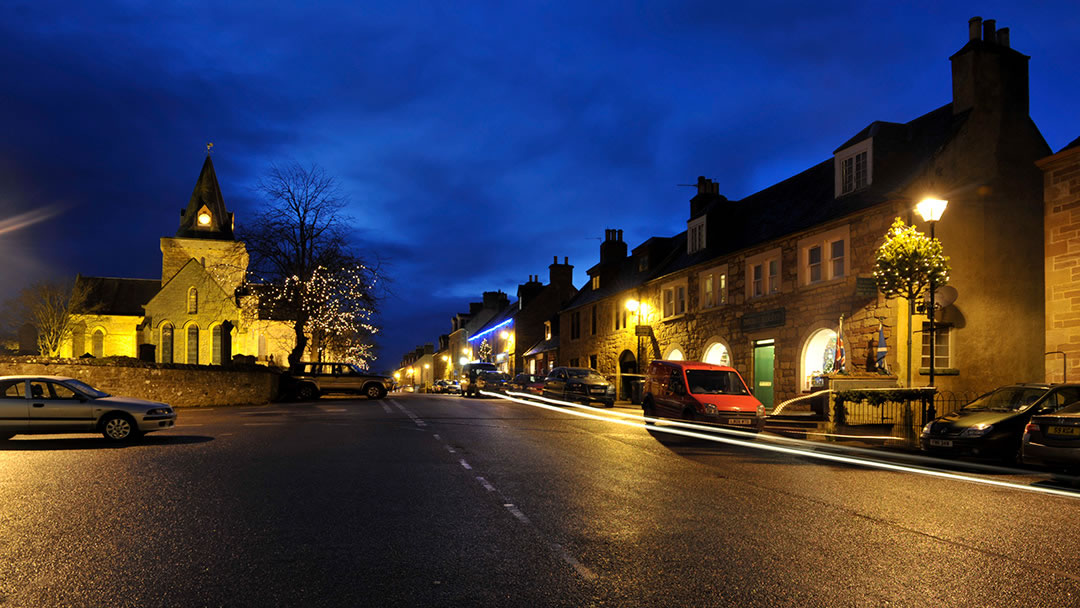
4. Dornoch
After Tain, the road north crosses the Dornoch Firth. The Dornoch Firth Bridge was opened in 1991, but if you’ve time, take a scenic detour over Struie Hill (known as The Million Dollar view), Bonar Bridge and, in autumn, visit the Falls of Shin to see salmon leaping. The picturesque town of Dornoch has a cathedral with a riveting history and was the last place where someone in Britain was killed for witchcraft.
Did you know? Royal Dornoch Golf Club is considered one of the must-play courses for golfers.
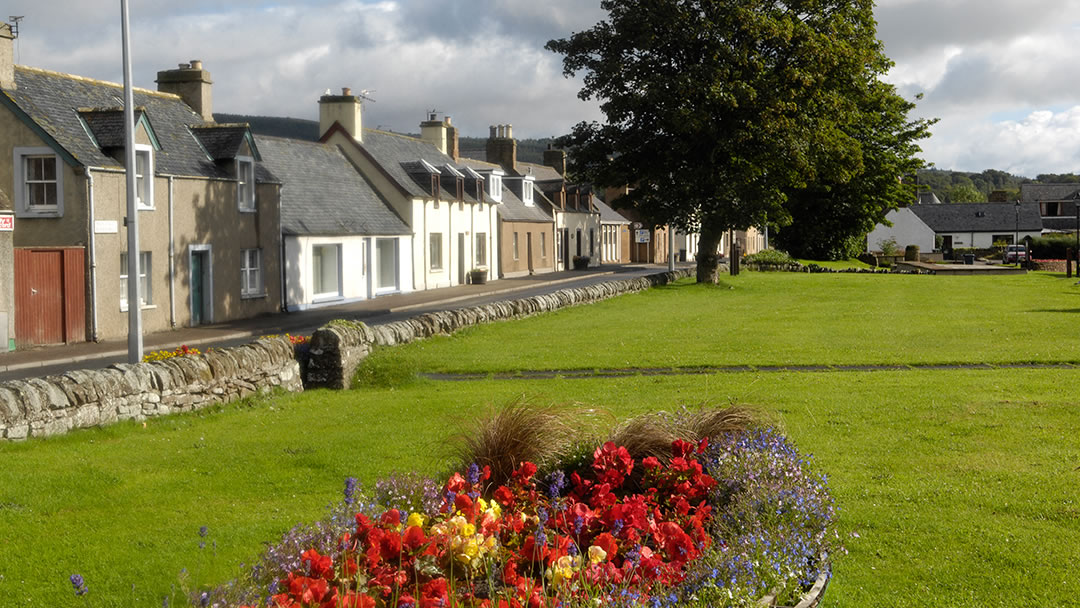
5. Golspie
After travelling through bright woodland and a shimmering tidal estuary called Loch Fleet (pictured at the top of this page), the town of Golspie is a fine stop. It has shops and cafes, a long sandy beach littered with fossils, and a walk to a waterfall and gorge. Above the village, the hill Ben Bhraggie (394m) can be seen from miles around. The controversial statue at the summit is the 1st Duke of Sutherland, who was involved with the Highland Clearances.
A handy tip: The Mound, south of Golspie was built in 1816 as part of the road north, and it stretches ½ mile across Loch Fleet with a bridge at the end. Stop here for a fine view!
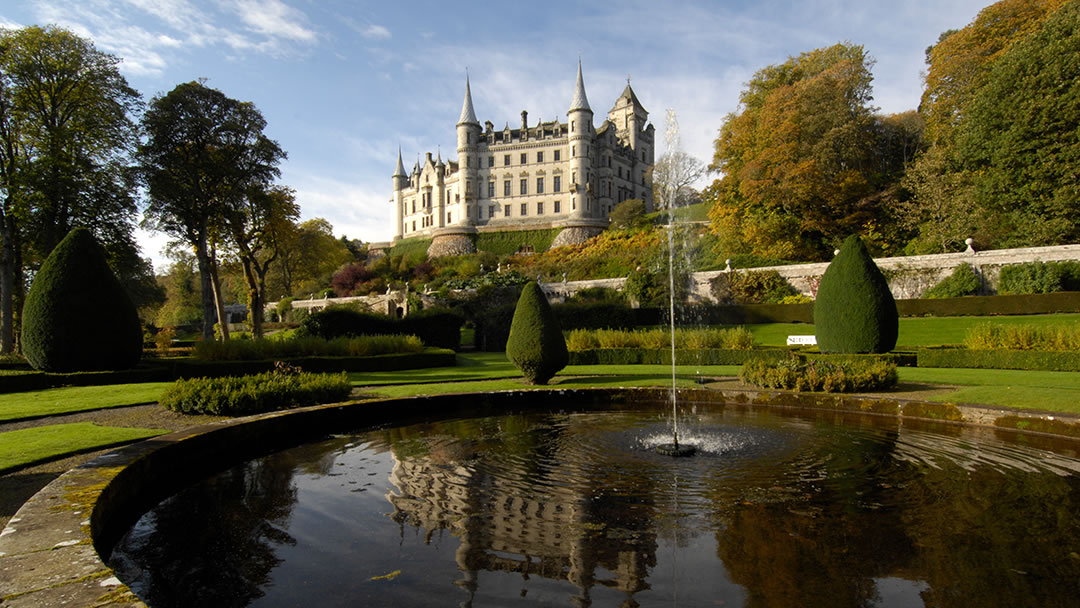
6. Dunrobin Castle
Just outside Golspie stands enchanting Dunrobin Castle. This huge mansion house was designed in the 19th century by Sir Charles Barry, who was the architect of the Houses of Parliament, and it resembles a French chateaux. This labyrinthine building, filled with art, books, and tapestries is the family seat of the Earl of Sutherland. Make sure you explore the exquisite garden facing the coast.
Film buffs may recognise Dunrobin Castle from Stanley Kubrick’s film Barry Lyndon.
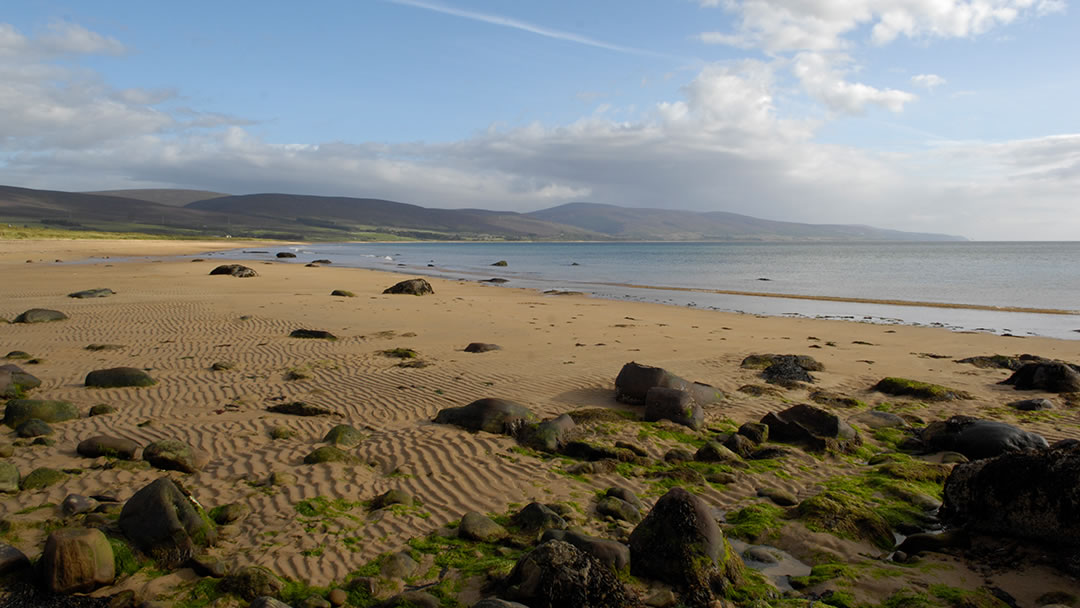
7. Brora
The village of Brora is a place to park for a break. It sits at the mouth of a river, and has shops, cafes, and a famous ice cream parlour. From the 16th to late 20th century coal was mined in Brora, and the malt whisky made at Clynelish Distillery is a vital component of Johnnie Walker whiskies. After Brora, the coastal road northwards becomes quite steep.
Two miles north of Brora, the Wolf Stone marks the spot where, around the year 1700, the last wolf in Scotland was killed.
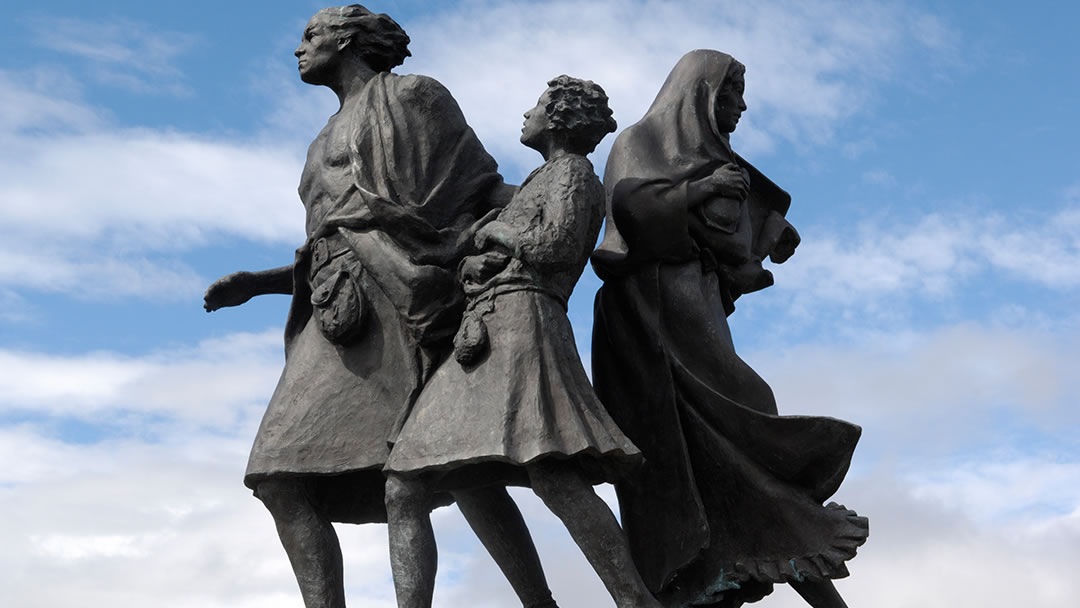
8. Helmsdale
Helmsdale is interesting as the town was developed to house displaced families from the Highland Clearances. Following this, 200 boats worked from the fishing harbour, but this number declined as larger vessels began to look for more substantial ports. A castle with a bloody history was cleared to make way for the new road bridge.
Look out for the Emigrants Statue in Helmsdale, which commemorates the tens of thousands made homeless by the Highland Clearances.
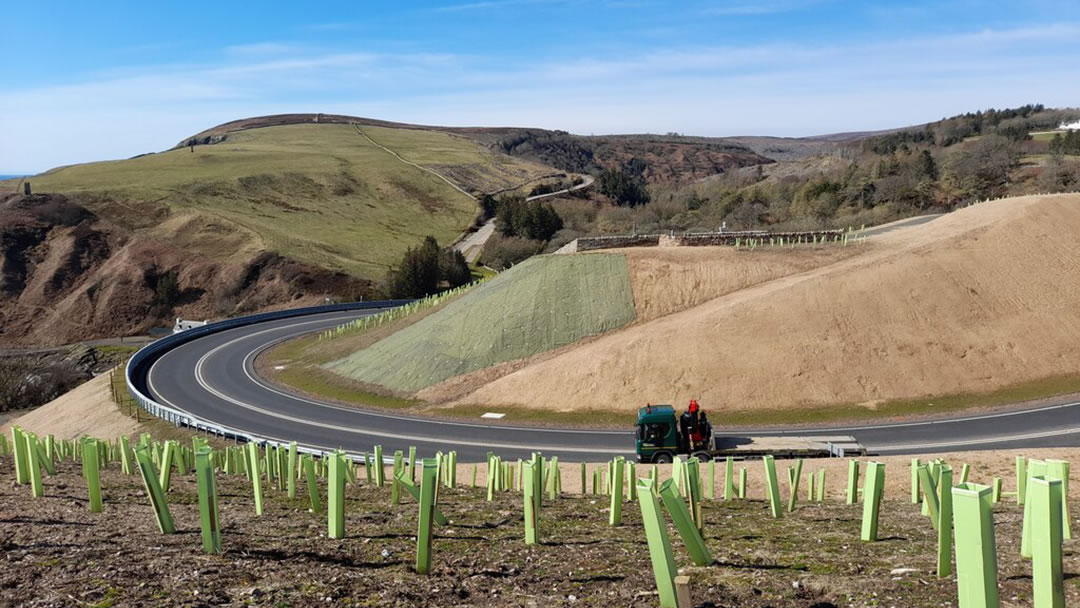
9. Berriedale
After some twisting, turning roads, there’s a dark gorge with a steep drive downhill and a slow drive back uphill around some tight corners. Drivers will be pleased to know that Berriedale’s hairpin bends have been improved in recent years. The area is worth exploring to see the viewpoint, some old cottages, and a peaceful cove away from the traffic.
Badbea Historic Village, south of Berriedale, was a bleak home to 28 families evicted by the Highland Clearances. It now lies in ruins.
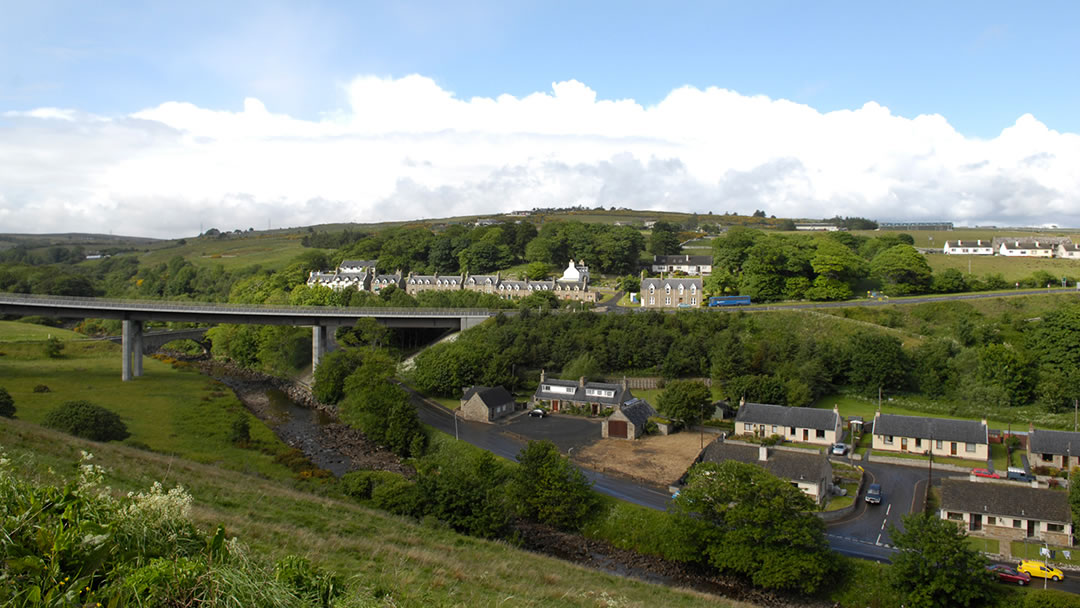
10. Dunbeath
After more cliffside roads, you’ll arrive at Dunbeath, once home to Neil M Gunn who wrote Highland River and The Silver Darlings. A colossal bridge, built in 1990, stands over the village, but the harbour and area upstream from the river (known as The Strath) are worth exploring to see Dunbeath Broch and the prisoner’s leap, where Ian McCormack Gunn was set free after leaping the gorge.
Find out more about Neil M Gunn (1891 – 1973) in the Dunbeath Heritage Centre, which is housed in his old school.
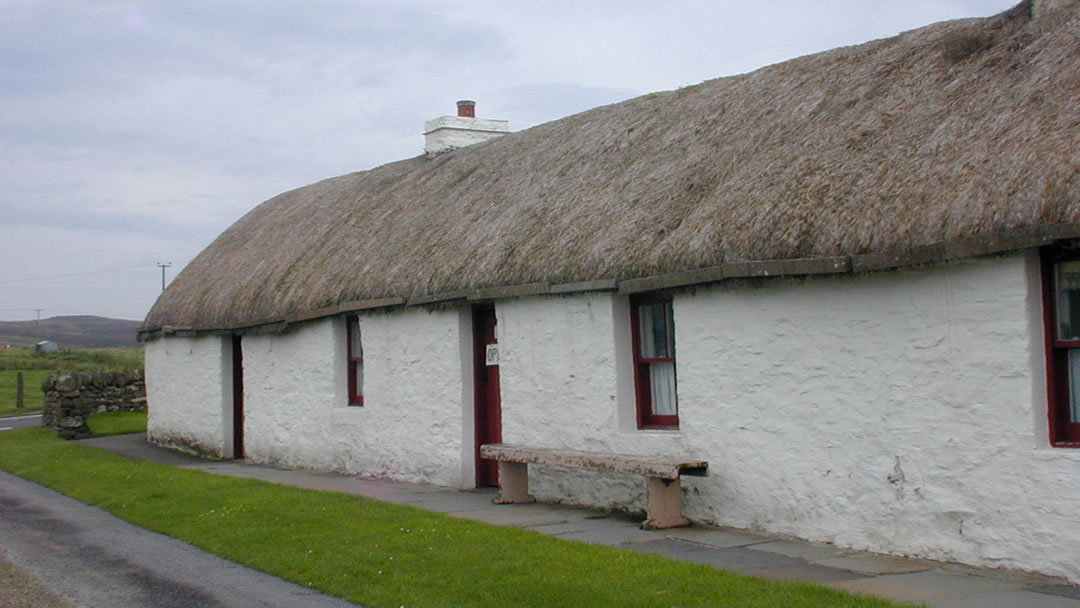
11. Laidhay Croft Museum
A low, white-washed thatched cottage with red doors, Laidhay Croft Museum is not hard to miss a mile north of Dunbeath on the A9. It’s a 19th century croft with furniture from the period, and visiting it is like stepping back 200 years. There’s also a tearoom here, serving tasty scones and cakes.
The house, byre, and barn at Laidhay were all under the same roof!
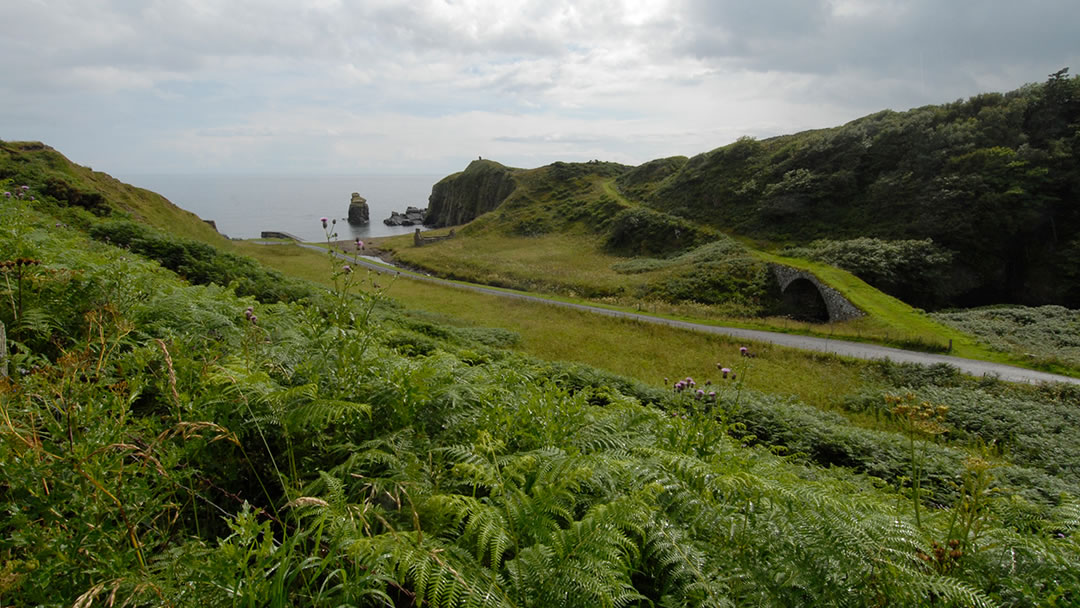
12. Latheron
Lathron marks the point where the A9 turns inland towards Thurso. The coastal road continues on as the A99 towards Wick and John O’ Groats. The Clan Gunn Museum and Heritage Centre is located at Latheron in a former parish church. It tells the clan’s story, but isn’t just for those looking for genealogical answers, as the museum also covers the history of the North of Scotland.
Just before Latheron there’s a delightful harbour to visit at Latheronwheel.
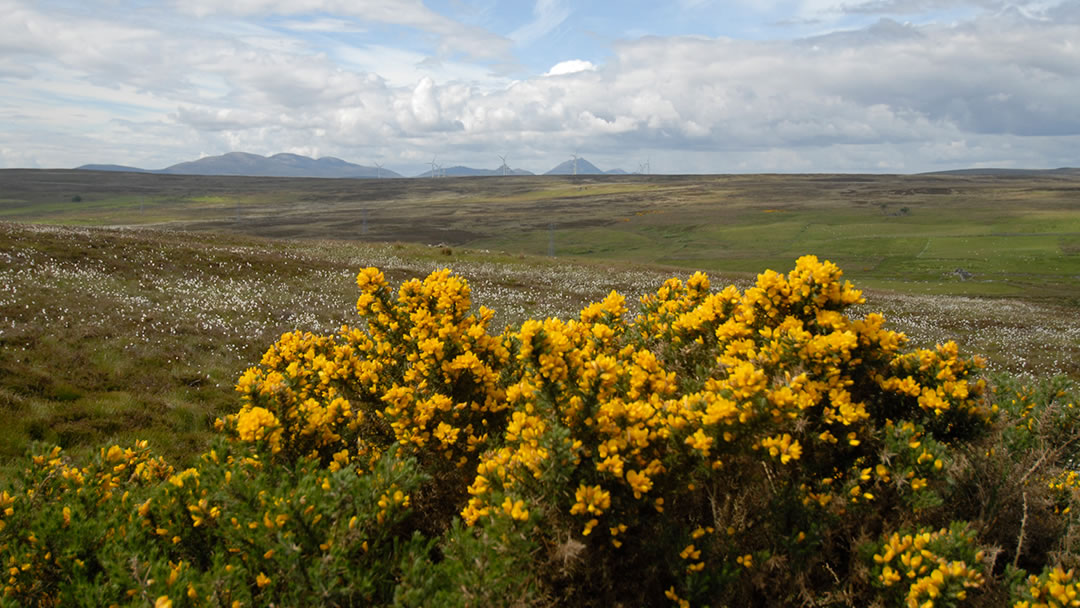
13. Cassiemyre
The final stretch of road to Thurso takes you over a beautiful, desolate landscape. The Cassiemyre (causewaymyre) is a causeway built across peatbog between Lybster and Spittal, some 13 miles long. The road passes tiny settlements, quarries for Caithness flagstones, abandoned crofts and large windfarms.
The Cassiemyre was built in the 18th century by Sir John Sinclair’s tenants, who had to work for six days on the road by law.
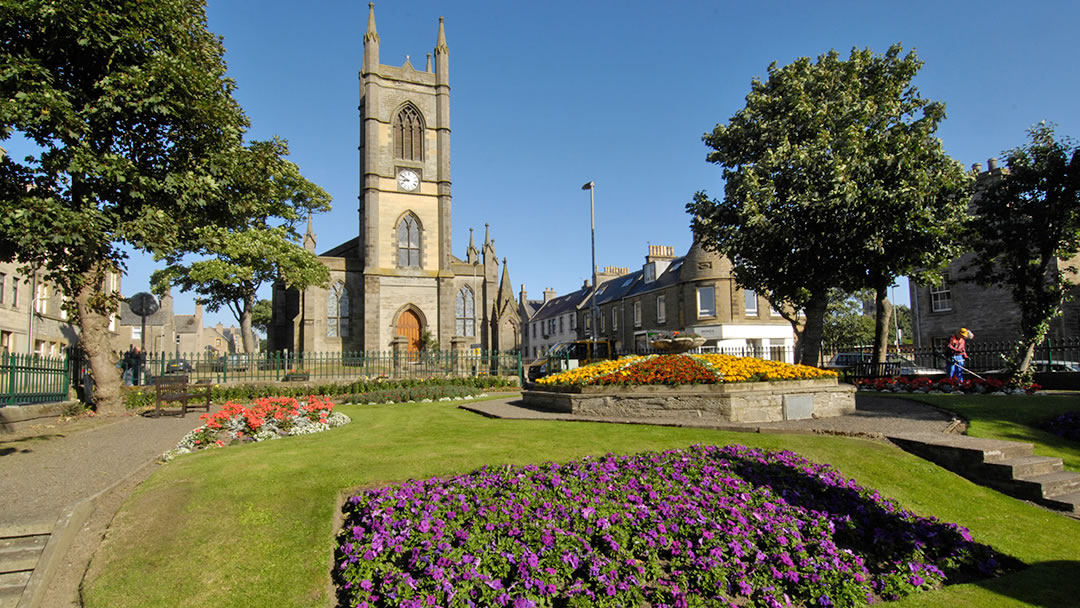
14. Thurso
There’s much to see in the most northerly town in Mainland Britain, including Old St Peter’s Kirk from 13th century, surfers in the spindrift of Thurso bay, the original village close to the river and shore, and a mostly demolished castle. Thurso was important in Norse times and grew more recently with the flagstone industry and employment from nearby Dounreay.
Did you know? Sir William Smith, founder of the Boys Brigade in 1883 came from Thurso.
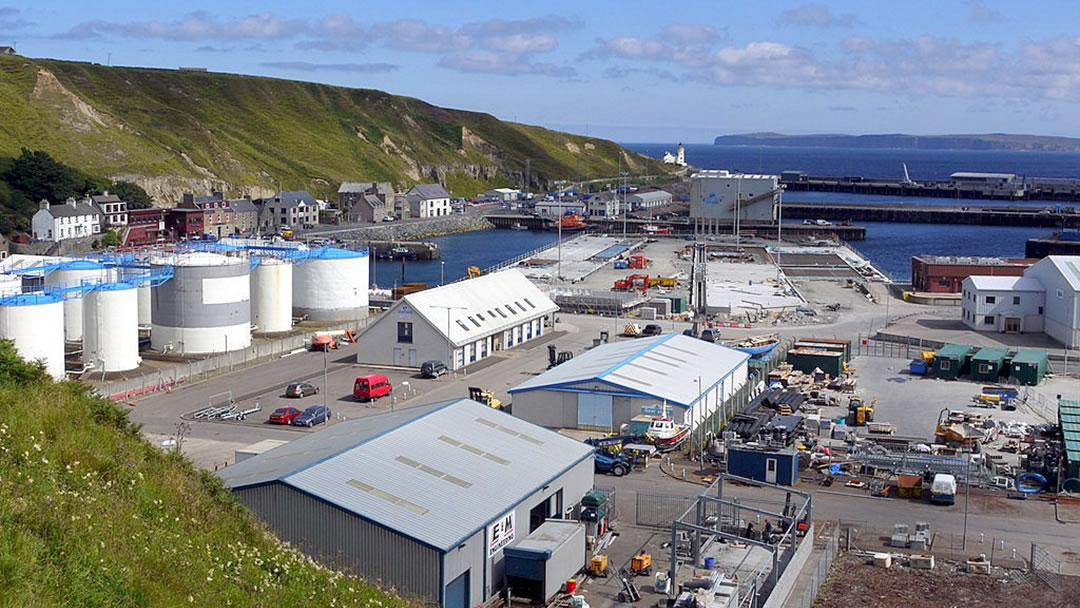
15. Scrabster
In 1855 a regular steamship service to Stromness in Orkney was set up from Scrabster (from the Old Norse Skara Bolstaoir, meaning steading on the edge). MV Hamnavoe now undertakes this run from Scrabster to Stromness. Scrabster is also one of the busiest fish landing ports in the UK.
If you’ve time, We’d recommend a visit to Holborn Head, where you’ll see a white lighthouse (now a private residence), the remains of religious buildings on the cliffs, and some dramatic and very exposed coastal scenery.
 By Magnus Dixon
By Magnus DixonOrkney and Shetland enthusiast, family man, loves walks, likes animals, terrible at sports, dire taste in music, adores audiobooks and films, eats a little too much for his own good.
Pin it!
